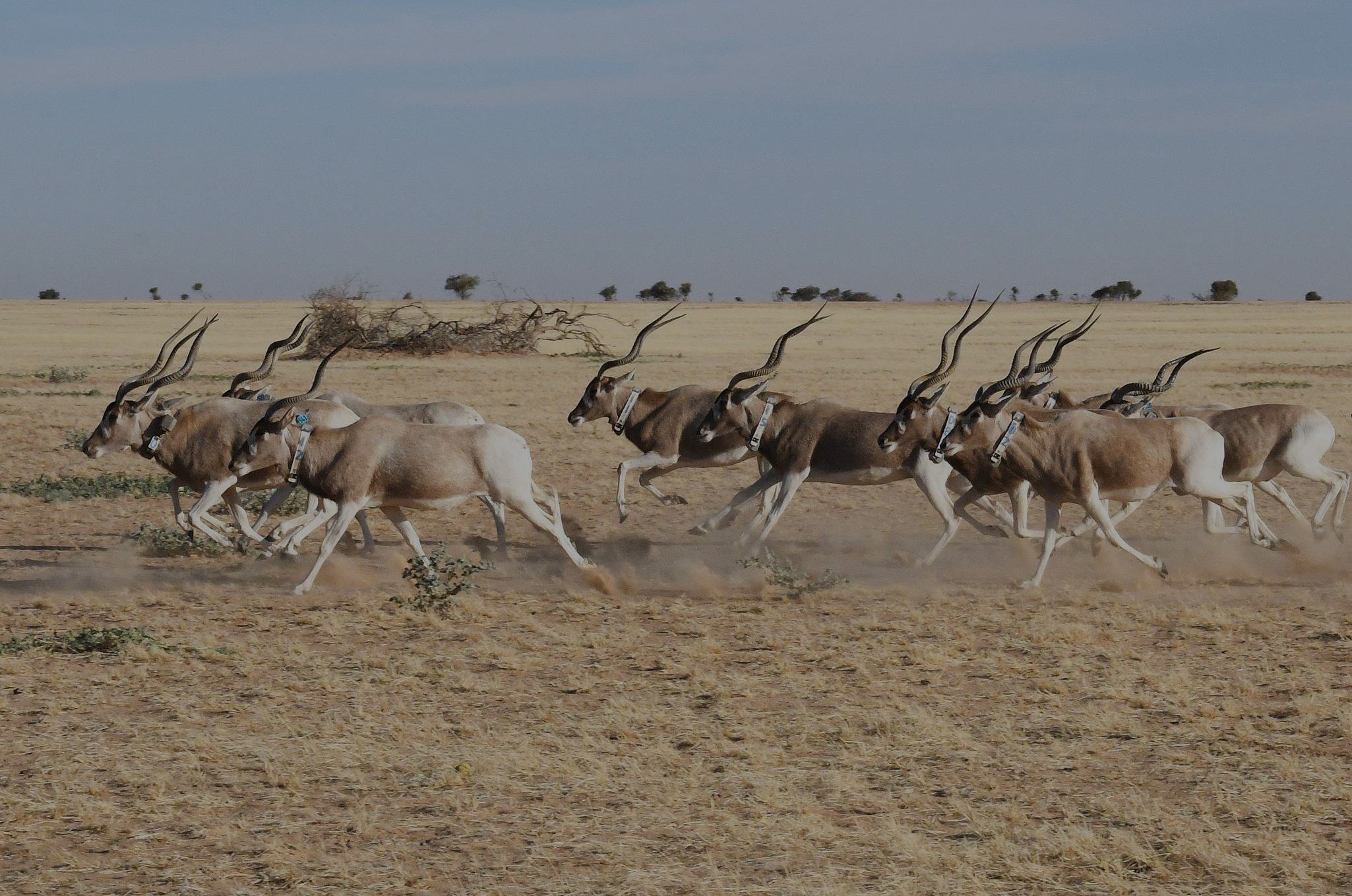
Saharan Wildlife Recovery Center

Shifting Sands, Fading Footprints
The Sahara Desert and its fringe of short, dry grasslands (the Sahel) are home to a unique suite of species exquisitely adapted to life in this harsh, dry environment. Yet the Sahelo-Saharan region of North and West Africa is all too often overlooked and under-funded when it comes to conservation action. If you ask most people to tell you where the largest mammal to go extinct in the last quarter century lived, most people immediately think about tropical rainforests, ocean reefs, or some other highly publicized conservation "hotspot." Tragically, it is the scimitar-horned oryx of the Sahelo-Saharan region that holds this dubious distinction. When a 300-pound antelope species that once roamed the desert in the tens of thousands can slip quietly into extinction without the world taking note, it is time for a wake-up call.
Following in the Oryx's Footsteps?
An alarming number of species are following in the fading footprints of the Scimitar-horned oryx towards extinction. The large white addax antelope, king of the deep desert, now numbers less than 300 in the wild. Dama gazelles are now found only in isolated and tiny herds (three to five animals) scattered in a few isolated areas of the Sahelo-Saharan region. Cuvier's gazelles, slender-horn gazelles and Barbary sheep have all been severely depleted. The desert race of the cheetah, never numerous in pristine times, clings tenuously to survival in remote areas of the Sahara. Even the Saharan race of the red-necked ostrich, the largest bird on the planet, has been exterminated across 95% of its former Saharan range.
Big Place, Big Opportunities
The Sahara is a big place: three million square miles sprawling over 14 nations. While habitat degradation is an issue in some parts of the Sahelo-Saharan region, unlike most areas under threat, there are literally millions of acres of good habitat still available for wildlife, with perhaps the lowest density of human population found in and around any conservation hotspot in the world. The most immediate problem facing Saharan wildlife today is the unregulated and unsustainable hunting that occurs in a vacuum of conservation planning for the region. With the right kind of technical and material support, we believe win-win solutions can be found that allow for sustainable use of wildlife and a rational plan for managing the Sahara's natural treasures.
Raising Our Voice in the Desert
The Saint Louis Zoo's Saharan Wildlife Recovery Center is one of the leading voices in a growing chorus raising awareness about the Sahara's silent crisis of extinction. Its mission is to link zoo expertise and resources with meaningful conservation action in the Sahara. What we do with our Saharan species in zoos today will have a tremendous influence on these species' futures in the wild. Our program of work includes such activities as helping to launch the Sahara Conservation Fund (SCF), the only non-governmental organization devoted to conserving Sahelo-Saharan wildlife; addax and scimitar-horned oryx repatriation into fenced reserves in Tunisia using zoo-bred animals; supporting a local ostrich recovery program in Niger through captive breeding; collecting baseline scientific data on Saharan wildlife through support of field surveys in Mali, Niger and Algeria; and supporting the planned reintroduction of captive-bred scimitar-horned oryx from the Middle East into Chad.
Big Dream, Greater Hope
Recently the Saint Louis Zoo, in partnership with the Sahara Conservation Fund, the Republic of Niger, the Convention on Migratory Species, and numerous other zoos and conservation organizations around the world realized a shared dream to establish a nature reserve for addax and other Sahelo-Saharan wildlife in the Termit/Tin Toumma region of Niger. On March 6, 2012, the Council of Ministers for the Republic of Niger decreed the formal establishment of the Termit & Tin Toumma National Nature and Cultural Reserve. At 97,000 km² (37,450 square miles), the reserve is bigger than the state of Indiana, and now ranks as the largest protected area in Africa. While there is still much work to be done to protect the wildlife in this new reserve, today there is more hope for the addax and other wildlife sharing this park.
Raising the Flag Here at Home
Zoos and private collections worldwide hold large numbers of some of the most critically endangered Sahelo-Saharan species; these institutions look for ways to connect what zoos do best (captive breeding and the scientific management of small populations) to the recovery of the species in the wild. The Saint Louis Zoo is home to some of the Association of Zoos and Aquariums’ (AZA) key Saharan wildlife breeding programs: the Addax Species Survival Plan (SSP) the Cheetah SSP; the Fennec Fox SSP. The Zoo also participates in the AZA's breeding programs for dama gazelles.
Climate Change Impact
The Sahel Sahara area is extremely vulnerable to climate issues. Repeated droughts and continued desertification have decimated wildlife and domestic animals in a predominantly pastoral area. A quarter of African countries are located in this area, which includes the top eight largest states of the continent, six belong to the Sahel Sahara area: Algeria, Chad, Libya, Mali, Niger, and Sudan.

